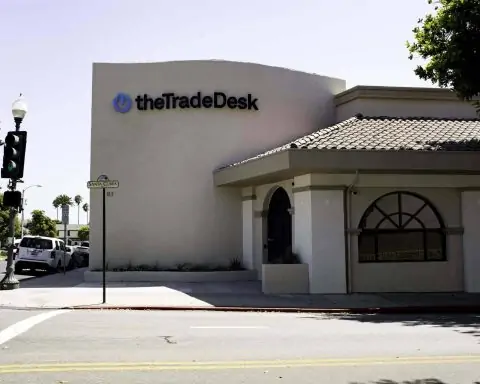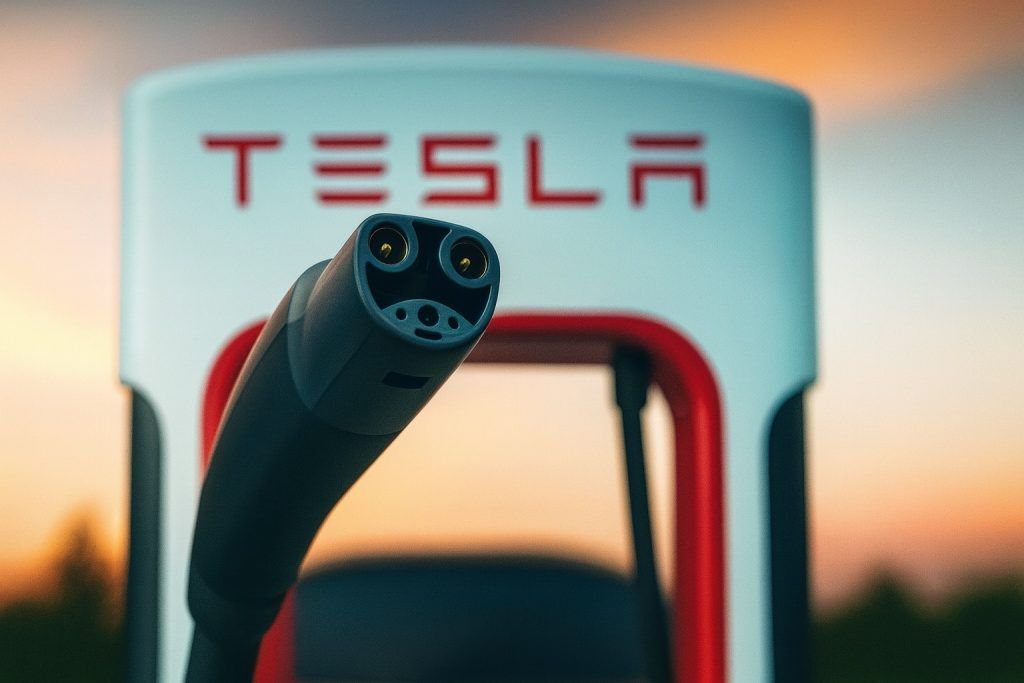Amazon (NASDAQ: AMZN) is trading slightly lower today, capping a bruising November that has erased its 2025 gains and turned the stock into one of the weaker “Magnificent Seven” names.
As of mid‑afternoon on November 21, 2025, Amazon shares trade around $216.5, down roughly 0.3% on the day, with an intraday range near $215–219 and volume just over 21 million shares.
After briefly being up about 16% year to date in early November, AMZN is now about 1% lower for 2025, according to a new MarketWatch analysis that says the stock’s “2025 gains just got wiped out.” [1]
Below is a structured look at today’s Amazon stock story: price action, AWS debate, AI megadeals, regulatory risks, and what analysts and institutions are signaling.
1. Amazon stock price snapshot – November 21, 2025
Key numbers as of this afternoon:
- Last price: ≈ $216.53
- Day change: about –$0.61 (–0.3%)
- Intraday high / low:$218.98 / $215.39
- Market cap: ~$2.3 trillion [2]
- 1‑year range: roughly $161–259 [3]
- 50‑day moving average: ≈ $228
- 200‑day moving average: ≈ $221 [4]
Technical analysts note that AMZN has slipped below its 50‑day moving average and is drifting toward the 200‑day, a level that has twice acted as support this year. [5]
A separate Big Tech wrap‑up notes that Amazon shares have fallen about 12% since November 1, underperforming the broader market and reflecting renewed skepticism about lofty AI valuations. [6]
2. Why Amazon stock is under pressure today
Tech pullback + AWS questions
Several overlapping narratives are weighing on AMZN:
- Broad tech and AI sell‑off
- This week’s volatility has hit mega‑cap tech hard. A Finviz/MarketBeat analysis highlights Amazon among “3 Big Tech stocks sliding”, noting that investors are questioning whether AI spending will produce returns fast enough to justify valuations. [7]
- Global risk‑off sentiment has picked up, with Asian and US markets selling off on rate‑cut uncertainty and fears that AI‑linked tech valuations look overstretched. [8]
- Debate around AWS growth and AI profitability
- MarketWatch reports that Amazon’s 2025 gains have flipped to a 1% loss for the year, but argues the story hinges on AWS, which re‑accelerated to ~20% year‑over‑year revenue growth in Q3 2025 after a softer first half. [9]
- At the same time, a new note highlighted on Finviz shows Rothschild & Co Redburn downgrading Amazon from Buy to Neutral with a $250 price target, saying that while AWS is well‑positioned in generative AI, AI workloads look less profitable than traditional cloud services and may dilute returns. [10]
- Cloud market share concerns
- Fresh data from Synergy Research, summarized by The Register, shows AWS still leading with about 29% of global cloud infrastructure spend in Q3 2025, but its share has slowly declined since peaking in 2022, while Microsoft Azure and Google Cloud have been gaining. [11]
Put simply: the bull case says AWS has re‑accelerated and AI demand will supercharge growth; the bear case says AI is expensive, competition is intensifying, and the returns may not justify the capex binge.
3. AWS and AI: $38B OpenAI deal vs. Redburn’s downgrade
Morgan Stanley’s bullish AWS scenario
The MarketWatch piece leans heavily on a new note from Morgan Stanley analyst Brian Nowak, who:
- Reiterates an “Overweight” rating on AMZN with a $315 price target, implying roughly 45% upside from current levels. [12]
- Sees AWS as the “key to a stock comeback”, modeling:
- Base case: ~23% AWS growth in 2026
- Upside case:25–27% growth if AWS adds $60–75 billion in net new backlog, largely powered by AI workloads. [13]
A central pillar is Amazon’s recently announced multi‑year, $38 billion compute partnership with OpenAI, under which:
- OpenAI will run its advanced AI workloads on AWS infrastructure, including EC2 UltraServers with hundreds of thousands of NVIDIA GPUs and the ability to scale to tens of millions of CPUs.
- AWS aims to deploy all committed capacity by the end of 2026, with potential expansion into 2027. [14]
This deal directly feeds AWS’s backlog and is highlighted as a major reason the bulls believe AWS growth could accelerate further in 2026. [15]
Redburn’s counterpoint: AI may dilute returns
Redburn’s downgrade, published this morning, strikes a more cautious tone: [16]
- The firm argues that generative AI workloads are currently dilutive to returns, even for hyperscalers like AWS and Microsoft.
- It notes that the earlier thesis—AWS’s vertical integration and Anthropic partnership giving it a clear edge—now faces a reality where AI is scaling fast but margins lag.
- Their conclusion: after the recent AWS re‑acceleration and big AI announcements, upside from here looks more limited, justifying a move to Neutral.
Cloud share realities
Adding to the debate, Synergy’s latest cloud data (via The Register) paints this picture for Q3 2025: [17]
- AWS: ~29% market share (still #1, but down from its 2022 peak)
- Microsoft Azure: ~20%
- Google Cloud: ~13%
- The “big three” collectively hold about 63% of global cloud infrastructure spending in a $107B quarterly market.
Investors today are weighing whether Amazon can maintain high growth while defending margins in an increasingly crowded, capital‑intensive AI cloud race.
4. Massive AI and data‑center build‑out: Indiana, Mississippi and California
Whatever the debate about returns, Amazon is clearly doubling down on AI infrastructure:
Indiana: one of the world’s largest AI data centers
Network World reports that AWS has just opened a giant AI data center near Lake Michigan in Indiana (Project Rainier): [18]
- Cost: about $11 billion
- Size: 1,200 acres (roughly 4.9 km²)
- Hardware: an initial cluster of ~500,000 Trainium 2 chips, with plans to double that by year‑end
- Purpose: training and running Anthropic’s Claude and other advanced AI models on AWS.
This facility underlines how much capital AWS is pouring into AI compute – a key driver behind both the bullish growth expectations and the concerns about capex intensity.
Mississippi: $3B “Digital Delta” AI campus
A Benzinga report this morning highlights that Amazon has committed $3 billion to build a new AWS data center campus in Warren County, Mississippi, near Vicksburg: [19]
- The project is expected to create at least 200 high‑paying full‑time jobs, plus more than 300 regional support roles.
- It builds on earlier commitments of $10 billion and roughly 1,000 jobs in nearby Madison County.
- Mississippi officials describe it as the largest private investment in the county’s history and a cornerstone of the state’s emerging “Digital Delta” tech corridor.
The article also notes that Amazon plans to invest roughly $100 billion in AI initiatives in 2025, with Q4 capex around $26.3 billion, its highest quarterly spend ever, much of it aimed at AI data centers and infrastructure. [20]
California (Gilroy): new West Coast data center cluster
Separately, Amazon Data Services has just secured approval for a significant new data center project in Gilroy, California: [21]
- Location: 8050 Camino Arroyo, on a 56‑acre site.
- Build‑out: two buildings totaling ~438,500 sq ft of floor space, plus an on‑site substation and security building.
- Power: first phase requires a 49MW grid connection and 25 backup generators; plans also allow for a 50MW battery energy storage system.
Taken together, these moves show Amazon leaning hard into AI and cloud infrastructure as long‑term growth engines, even as investors debate the near‑term hit to free cash flow.
5. Regulatory overhang: Prime refunds and the Twitch teen ban
Two regulatory stories are also in focus for Amazon today.
Historic $2.5B FTC settlement and Prime refunds
The Federal Trade Commission has begun rolling out refunds from its $2.5 billion settlement with Amazon over allegedly deceptive Prime enrollment and cancellation practices. [22]
Key points:
- Amazon will pay $1.5 billion in refunds to affected Prime customers and a $1 billion civil penalty. [23]
- Eligible U.S. customers who were enrolled through certain “challenged enrollment flows” between June 23, 2019 and June 23, 2025 and used three or fewer Prime benefits in any 12‑month period are receiving automatic refunds between November 12 and December 24, 2025, typically via PayPal or Venmo. [24]
- Refund amounts cover Prime subscription fees up to $51. [25]
Beyond the direct financial cost, the case underscores regulatory scrutiny of Amazon’s subscription and interface design practices, something investors will track as lawmakers and regulators globally target “dark patterns” and consumer lock‑in.
Australia adds Twitch to under‑16 social media ban
In a separate development, Australia’s eSafety Commissioner has added Amazon‑owned Twitch to its list of “age‑restricted social media platforms” under the Online Safety (Social Media Minimum Age) rules. [26]
- From December 10, 2025, Twitch—along with Facebook, Instagram, TikTok, X, YouTube and others—must take “reasonable steps” to prevent Australians under 16 from having accounts, or risk fines of up to A$49.5 million (≈$32M). [27]
- The decision explicitly includes Twitch while excluding Pinterest, highlighting regulators’ view that live‑streaming and interactive platforms carry heightened risks for younger users. [28]
Financially, Twitch is still small within Amazon, but the news fits a broader pattern: Amazon’s ecosystem is under regulatory pressure, from e‑commerce and subscriptions to media and social platforms.
6. ESG and sustainability: Amazon, AI and carbon
On the ESG front, AI Magazine today highlights how IBM, Nokia and Amazon are using AI to hit climate and sustainability goals. [29]
For Amazon specifically:
- The company focuses on “carbon intensity”—emissions per dollar of gross merchandise sales—reporting 72.6g CO₂e per dollar in 2024, showing improvement even as total emissions rose with business growth.
- In 2024, Amazon delivered 1.5 billion packages using more than 31,400 electric vehicles, while cutting single‑use plastic in delivery packaging by 16.4% globally. [30]
- Amazon reports a power usage effectiveness (PUE) of 1.15 for AWS data centers, which is very efficient by industry standards. [31]
For long‑term investors and ESG funds, today’s sustainability coverage reinforces the idea that Amazon’s AI and logistics investments are tightly linked to decarbonization efforts, not just growth.
7. What big money and insiders are doing with AMZN
Institutional buying… and insider selling
Two MarketBeat 13F summaries published today show fresh institutional interest: [32]
- Wealth Watch Advisors INC increased its Amazon stake by 246% in Q2, now holding nearly 5,000 shares, worth about $1.1 million at the time of the filing.
- Wesleyan Assurance Society boosted its AMZN position by 26.8% to more than 232,000 shares, making Amazon its 7th‑largest holding at roughly $51 million in value.
Both reports note that institutional investors and hedge funds collectively own about 72% of Amazon’s float, underscoring that AMZN remains a core institutional name. [33]
At the same time, there has been ongoing insider selling:
- MarketBeat notes that Amazon insiders sold over 43,000 shares worth about $10.6 million last quarter, including sales by CEO Doug Herrington and director Keith Alexander. [34]
- A Reuters‑sourced Form 144 filing today shows Vice President David Zapolsky has filed to sell 7,100 shares under a pre‑arranged 10b5‑1 trading plan. [35]
Insider selling in mega‑caps is common (often for diversification or tax reasons), but in a nervous market it can still feed the narrative that management sees the stock as fully valued near recent highs.
Cramer’s view: “A buy on weakness situation”
An Insider Monkey piece this morning recaps comments from Jim Cramer, who argues that Amazon’s big bond deal to fund AI data centers is a sign of demand, not recklessness: [36]
- He describes Amazon as “a company that doesn’t spend unless it needs to”, highlighting management discipline.
- He notes that the stock spiked to about $258 at the start of November after a strong quarter and has since fallen into the low $220s, framing this as a “buy on weakness” scenario for long‑term investors—though he stresses scaling in slowly rather than buying all at once.
8. Long‑term outlook: forecasts and valuation
2030 scenarios
A fresh 24/7 Wall St. forecast lays out three scenarios for Amazon’s 2030 share price: [37]
- Bull case:$431 per share
- Assumes AWS grows operating profits rapidly (≈18% CAGR), e‑commerce margins improve with automation, and advertising becomes a $50B‑plus operating profit engine.
- Bear case:$77 per share
- Envisions AWS growth slowing sharply under competitive pressure, unprofitable segments resurfacing, and investors no longer paying a premium P/E for slower growth.
- Baseline case:$250 per share
- Based largely on Wall Street consensus: revenue rising from $710B in 2025 to about $1.15T in 2030, with net income approaching $100B and a more modest P/E multiple around 26.
With AMZN currently near $216–217, the baseline scenario implies moderate upside over five years, while the bull and bear cases illustrate how sensitive the stock is to AWS, advertising and capital‑allocation decisions.
Today’s valuation snapshot
MarketBeat’s fundamentals summary puts Amazon at roughly: [38]
- P/E: ~33x trailing earnings
- PEG: ~1.5x
- Debt‑to‑equity: about 0.15, indicating a still‑modest leverage profile even after recent bond issuance.
MarketWatch notes that on a price‑to‑earnings‑growth basis, Amazon trades at around 1.4x PEG, roughly a 50% discount to a basket of Big Tech and retail peers at around 1.9x, suggesting room for multiple expansion if AWS delivers on AI‑driven growth. [39]
9. Is Amazon stock a buy after November’s sell‑off?
Whether AMZN is attractive today depends heavily on your time horizon and conviction in three ideas:
- AWS as an AI winner
- Bull view: AWS’s re‑accelerating growth, the $38B OpenAI deal, and massive data‑center build‑out (Indiana, Mississippi, California) will translate into mid‑20%+ growth and strong long‑term margins, making today’s valuation look cheap. [40]
- Bear view: AI infrastructure is becoming a commoditized arms race; returns may stay under pressure as Microsoft, Google, Oracle and GPU‑focused “neoclouds” chase the same workloads. [41]
- Regulatory and reputational risk
- Ongoing FTC actions, multibillion‑dollar settlements, and now child‑safety rules impacting Twitch show that regulators are increasingly willing to confront Amazon’s business practices. [42]
- While these don’t currently threaten the core AWS or e‑commerce franchises, they could add costs, constrain growth initiatives, or shape future user‑experience decisions.
- Execution on capex and sustainability
- Amazon is committing tens of billions per quarter to AI and infrastructure. The payoff depends on disciplined execution, keeping utilization high, maintaining pricing power, and leveraging AI across retail, logistics and advertising. [43]
Short‑term, AMZN is trading in a correction phase, with the stock below its 50‑day moving average and November’s slide erasing the year’s gains. Technical traders are watching the 200‑day moving average around $221 as a key support level; a sustained break lower could invite more selling, while a bounce could catalyze “buy the dip” flows. [44]
Long‑term, the investment case still rests on familiar pillars:
- Dominant position in US e‑commerce
- Leading but challenged position in cloud (AWS)
- Fast‑growing, high‑margin advertising business
- Massive AI and data‑center optionality
10. Key takeaways for November 21, 2025
For readers tracking Amazon stock today, here’s the condensed picture:
- Price: Around $216.5, down ~0.3% on the day and about 1% lower year‑to‑date after a sharp November pullback. [45]
- Narrative tug‑of‑war:
- Bullish: AWS re‑accelerating, huge $38B OpenAI partnership, massive AI data‑center expansion, attractive relative valuation, and strong institutional support. [46]
- Bearish: AWS losing some share to rivals, doubts about AI profitability, heavy capex, insider selling, and growing regulatory scrutiny. [47]
- New headlines today:
- Redburn downgrades AMZN to Neutral on AWS AI margin concerns. [48]
- MarketWatch highlights that 2025 gains are gone, but Morgan Stanley still sees ~45% upside on an AWS‑driven recovery. [49]
- Amazon’s Twitch is added to Australia’s under‑16 social media ban, and Prime refund emails continue rolling out under the $2.5B FTC settlement. [50]
- New and expanded data‑center projects in Indiana, Mississippi and California underline the scale of Amazon’s AI bet. [51]
Disclosure & disclaimer:
This article is for informational and educational purposes only and is not financial, investment or trading advice. Always do your own research or consult a licensed financial advisor before making investment decisions.
References
1. www.marketwatch.com, 2. www.marketbeat.com, 3. www.marketbeat.com, 4. www.marketbeat.com, 5. finviz.com, 6. finviz.com, 7. finviz.com, 8. www.share-talk.com, 9. www.marketwatch.com, 10. finviz.com, 11. www.theregister.com, 12. www.marketwatch.com, 13. www.marketwatch.com, 14. www.aboutamazon.com, 15. www.marketwatch.com, 16. finviz.com, 17. www.theregister.com, 18. www.networkworld.com, 19. www.benzinga.com, 20. www.benzinga.com, 21. www.datacenterdynamics.com, 22. www.ftc.gov, 23. www.ftc.gov, 24. www.ftc.gov, 25. www.ftc.gov, 26. www.reuters.com, 27. www.reuters.com, 28. www.reuters.com, 29. aimagazine.com, 30. aimagazine.com, 31. aimagazine.com, 32. www.marketbeat.com, 33. www.marketbeat.com, 34. www.marketbeat.com, 35. www.tradingview.com, 36. www.insidermonkey.com, 37. 247wallst.com, 38. www.marketbeat.com, 39. www.marketwatch.com, 40. www.aboutamazon.com, 41. www.theregister.com, 42. www.ftc.gov, 43. www.benzinga.com, 44. finviz.com, 45. www.marketwatch.com, 46. www.aboutamazon.com, 47. www.theregister.com, 48. finviz.com, 49. www.marketwatch.com, 50. www.reuters.com, 51. www.networkworld.com







